Irish Placenames – An Overview
Researching your Irish Ancestry? One of the “brick walls” I see people coming up against is understanding Irish placenames – especially when the spelling seems to vary so widely. In this article – we’ll look at the 7 main component parts of Irish placenames to help with your Irish ancestry research.
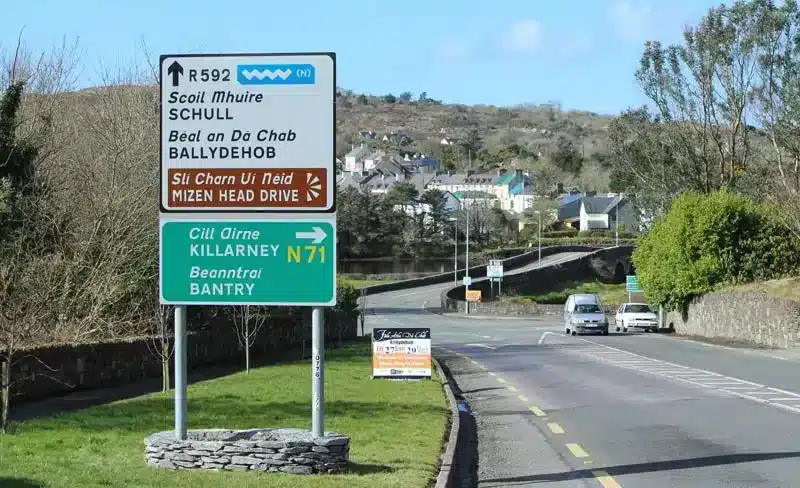
Just this week, I received a request from Helen Wyse (always listen to someone with Wyse as a surname!). Helen said:
I am very curious about the naming conventions used for townlands, baronies, villages etc. which seem to repeated over and over again. So many places are prefixed or suffixed in such a way that it makes me wonder what they mean and if the meanings are useful to us in our search for ancestors. These are two examples: KILL as in Killaloe and LANE in Ballyvolane. Do Kill, lane and Bally have a geographical significance or a descriptive significance? Are they Gaelic words?
Here is a list of some of the prefixes that I frequently see in place names: Kill, Droum/Drum, Rath, Balli/Bally, Cool, Gort, Mull, Doon, Knock, Ross, Knock, Castle, Glen.
This is a list of some of the suffixes that I frequently see: Banno/Banno, Beg/Begg, Boy, More, Nagh, Nane, Reagh, More, Creagh.
Thanks for giving us a direction with your question this morning, Helen. You bring up something that I hear a lot of from readers – especially when you are trying to understand, or heaven forbid – pronounce – a townland that your ancestor originated in.
So, I decided NOT to look up lots of reference books – but give you an answer off the top of my head. So, forgive me in advance if some of this reply sounds a little opinionated – but you can also check with the “official” sources later.
Irish Placenames: Cows, Hills, Rocks, Forts, Churches, Woods, Towns, River Mouths – Big and Small.
It’s worth giving a little bit of context before we go on. Remember that most Irish placenames (especially townlands) have been in place for many hundreds – if not thousands – of years. Most were named when Irish was the everyday language.
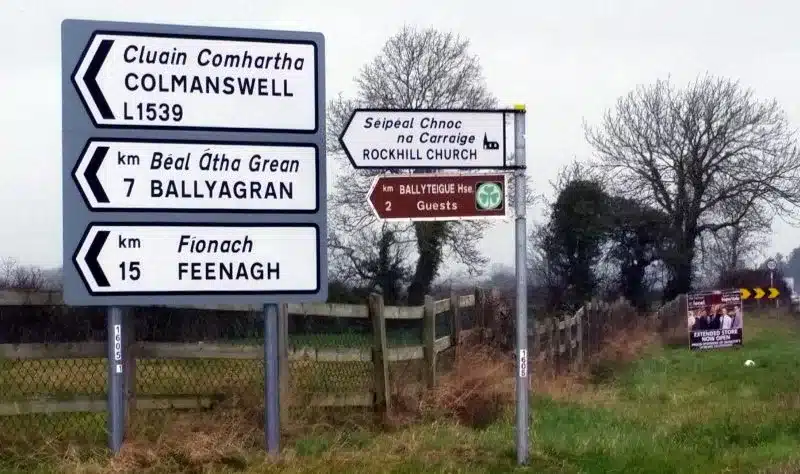
Before the arrival of the Normans in the early 1200s, Ireland was a land of many “Little Kingdoms”. The tribal boundaries of these little kingdoms were constantly under pressure from ambitious neighbours. These boundaries, and the agreements that held them in place, were often orally agreed and witnessed. Prominent landmarks like hilltops, rivers, forts – and so on – were used to provide reference points. It was a time well before the maps we know today.
Across Ireland, there was no single authority or administration – no single law system. The Brehons (judges) administered a type of local law – dealing with areas like the division of land across generations, and the often resulting disputes. While there were no maps, almost every visual feature in a kingdom, townland or field had a name. There were often up to 1000 identifiable features inside a single townland.
As time went on, the Normans arrived. They used the existing names and naming systems for many of the towns, castles and baronies they put into place. Even later still, English became more widely used across the island – and instead of translating from Irish to English, many of these placenames were “phonetically” anglicised – sometimes – well, sometimes, atrociously!
So, ready for some prime examples of common words in Irish placenames?
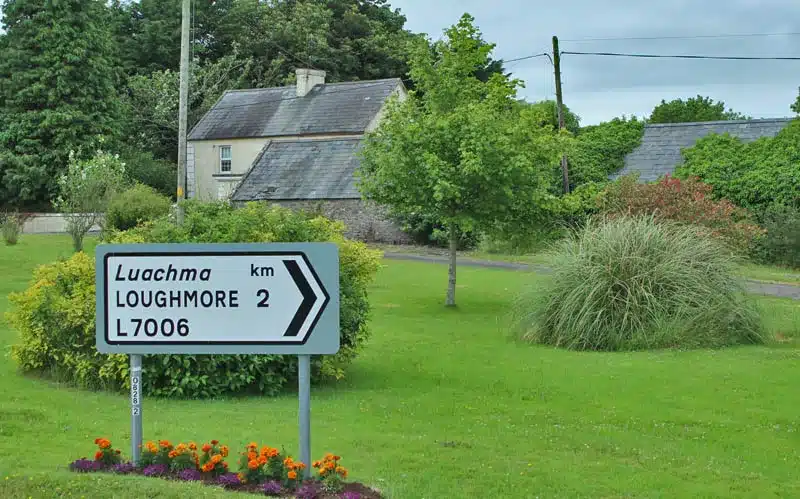
COWS: The cow was at the centre of the Irish farming economy for probably thousands of years. The Irish for Cow is “Bó” – pronounced “Boe” – and guess what we call roads in Irish? “Cow-ways” or “Bóthair” (small roads are often called “Boreens”). This comes across in many placenames such as Boherbue (Boher-bwee).
HILLS: Ireland has a fairly low tree line, and the tops of many of our hills and mountains are visible. The Irish for hill is “Cnoc” – pronounced Canuck – which you will often see in placenames as “Knock” – such as Knock, Knockroe, Knocknaheeny and so on.
FORTS: Forts were often built on small hills with good visibility all around, or in other prominent places. The Irish for fort is “Dún” – pronounced “Doon” – and this is contained in the names of plenty of Irish towns and areas, such as Dungannon, Dungarvan, Downpatrick and so on. Smaller forts were called Rath or Lios.
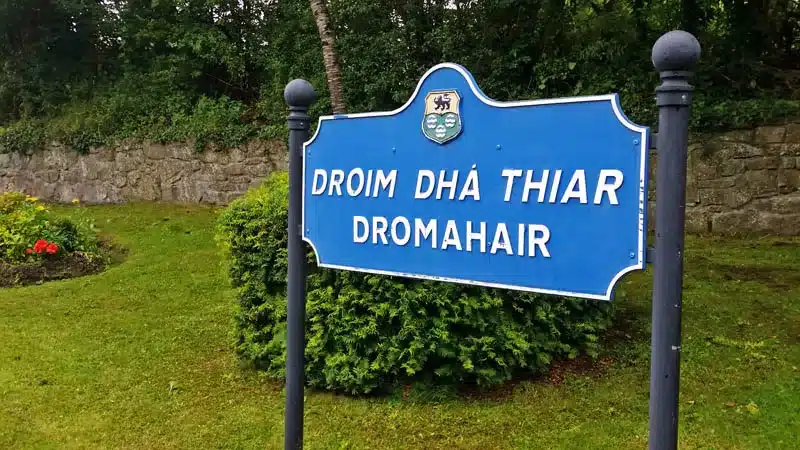
ROCKS: These were often rocky outcrops in the middle of pasture or a bog even. Ideal for meetings or building a fort upon. The Irish for Rock is “Carraig” – pronounced “Carrig” – and you will find this in many placenames such as Carrick-on-Shannon, Carrickmacross, Carrigaline, Carrickfergus. By the way – a rocky fort was called a Caishel – pronounced “Cashel” – sound familiar?
CHURCHES AND WOODS: Ireland had a monastic and saint tradition from about the 400s. The Irish word “Cill” – pronounced Kill – meant church. Places like Kildare, Killarney, Kilkenny all got there names from an association with a saint and their church.
I also mention Wood here – as the Irish for Wood is “Coill” – very close to “Cill”, but usually pronounced more like “Kwill”. This also appears in many of our placenames – often with a Kil or Cil at the beginning, making it hard to know if it were named after a church or wood. Examples are Killduff, Kylebrack, Clonakilty, Kilgarrif and so on.
TOWNS AND RIVER MOUTHS: I suppose the most recognisable Irish placenames are those starting with “Bally”. “Baile” is the Irish for town or home – pronounced Balya – and appears in many of our townlands (called Baile in Irish also), villages and town names. Names such as Ballymena, Ballinlough and so on.
Also, the Irish for mouth is “Béal” – pronounced Bale – and this also features in many town and city names that are located at the “mouth” of a river. Names such as Belfast, Ballydehob and Ballina.
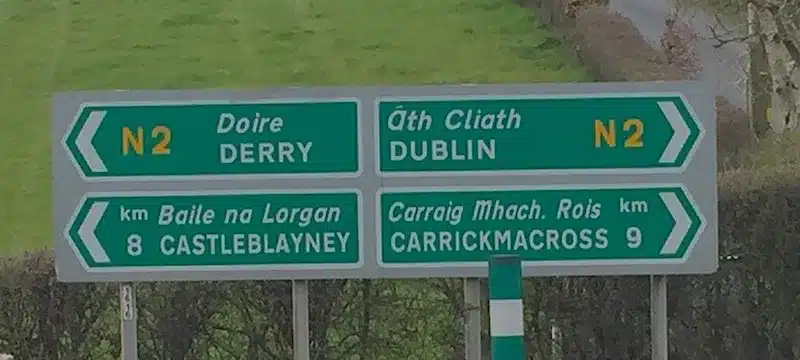
BIG AND SMALL: Where you have big hills, big fields, big rocks – you also have small ones. The Irish for small is “Beag” – pronounced “be-yug”, and the Irish for big is “Mór” – pronounced “Moor”. These words often spring up as “Beg” and “More” in many placenames. Places like Killybegs, Beginish, Ardmore, Lismore and so on.
And there are so many more placename words – but those ones above are the ones I see most often! Don’t even get me started on colours – Red (Roe), Black (Duff), Grey (Reagh), Yellow (Bue/Boy), Green (Glass), Brown (Dunn).
Let’s finish off with a little link back to Irish surnames. You see, you often see an original Irish tribal name spring up within a place name. Just this week, I was travelling through the north Cork village of Castlelyons.
Castlelyons is “Caisleán Ó Liatháin” in Irish and is named after the Gaelic tribe who were prominent in this area up to the 1200s. This was one of the “little kingdoms” I mentioned earlier – the tribe was called the Uí Liatháin, and held this area until the arrival of the Norman Barry family.
One of the leading families took the surname O Liathain – which later became anglicised as “Lyons“. So, the Barrys drove the Lyons away – but there is still room for both of their teas on my shelf (sorry, I couldn’t resist!).
If you travel around Irish land today, you often see the word “Ua” or “Uí” included in the placenames on signposts – this is a good indicator that you are driving near an old Irish tribal territory.
I think I better stop there, Helen and everyone else – before I go on too long! I hope that helps as a primer to Irish place names and why it is useful to understand a little more of their origin as you bring your Irish ancestry to life!

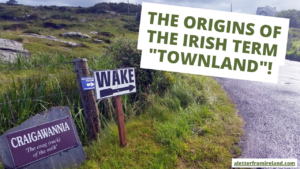
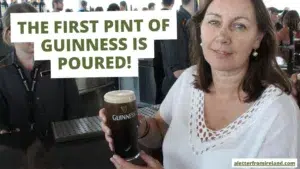
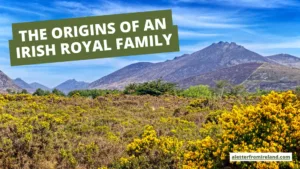
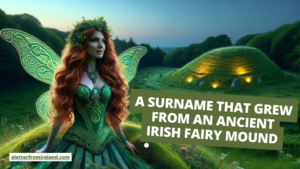
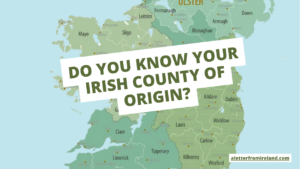
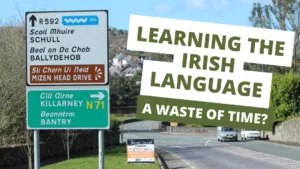
Only Plus Members can comment - Join Now
If you already have an account sign in here.